Table of Contents
We explore World War II, and discuss the countries involved in the conflict. In addition, we explain its antecedents, phases, and aftermath.
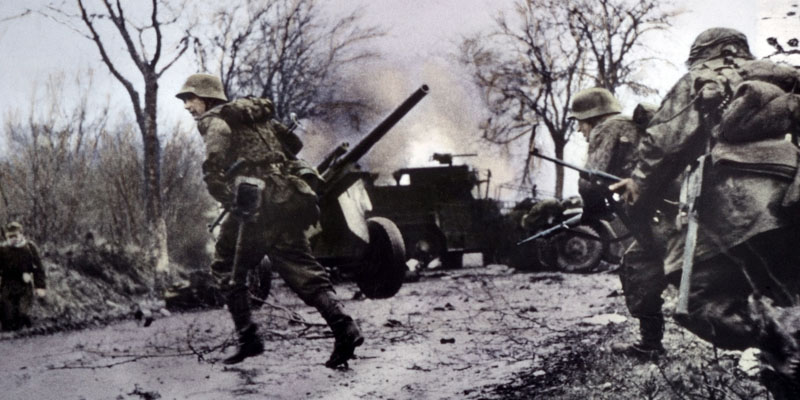
What was World War II?
World War II, also called Second World War, was a global armed conflict that took place between 1939 and 1945 in which the great powers of the time clashed. Over 72 countries were involved in the struggle.
It is considered the largest military conflict in human history on account of the number of belligerent nations, the territorial scope, the magnitude of the destruction and death, the weaponry used, and its historic aftermath.
In World War II, two sides opposed:
- The Allies, led by Great Britain, France, the United States and the USSR.
- The Axis, led by Germany, Italy and Japan.
Dozens of countries joined the conflict during the six years of the war, aligning themselves with one of the sides.
The causes of the war were manifold, among which were the economic and political crisis Europe underwent during the interwar period, the prevailing nationalist and imperialist capitalism of European powers, and the rise of fascist and totalitarian regimes in Italy and Germany.
In addition to the deaths of millions of soldiers on the battle fronts, there were millions of fatalities among civilians during World War II by the continuous aerial bombing of cities and countryside alike. In this context the Holocaust was perpetrated, entailing the systematic mass extermination of 6 million Jews at the hands of the German Nazi party.
At the end of the war, the United States dropped the atomic bombs on Hiroshima and Nagasaki, taking the lives of hundreds of thousands of civilians.

- See also: World War I
Antecedents of World War II
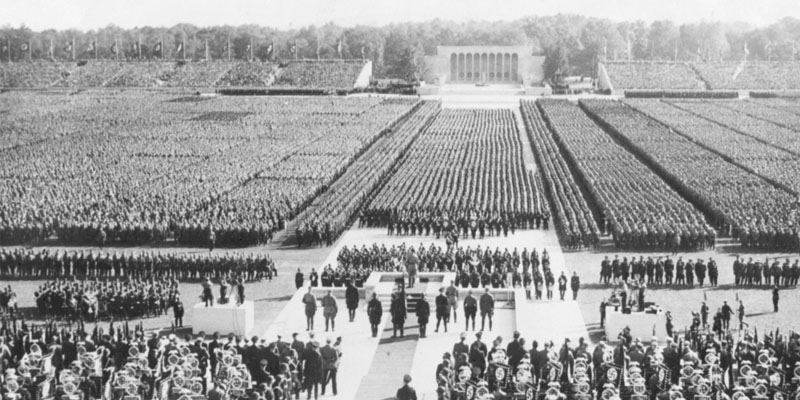
From the early 20th century, Europe had been riven by tensions that led to the First World War (1914-1918) and lingered throughout the 1920s and 1930s. These tensions were heightened by the competition of European imperialist powers for territories, resources, and political hegemony. Various events that triggered the conflict can be identified.
Economic causes
Among the main economic causes, the following stand out:
- The Great Depression. During the 1930s, the world's leading powers of the time underwent the first major capitalist crisis in history. Between 1929 and 1932, worldwide production fell by 40%, trade by 30%, and prices by 60%. Businesses and industries went bankrupt, leading to an unprecedented rise in unemployment: 15 million people were unemployed in the United States, 6 million in Germany, and 3 million in Great Britain.
- State intervention. In view of the economic crisis, countries began to implement protectionist measures and strong state intervention, following the doctrine of economist John Keynes. Aiming to stimulate stagnant economies, governments increased public expenditure to invest in national industries, raised customs duties to reduce imports, promote exports and control capital flow.
- Investment in the arms industry. In this context, numerous countries increasingly encouraged the development of their arms industries which, in addition to generating employment and economic mobility, produced technology and valuable goods against a backdrop of political tension. On the other hand, these industries required raw materials such as rubber, oil, and minerals, which many countries did not have access to within their territories, exacerbating the territorial claims of several European nations.
Political causes
Among the main political causes, the following can be mentioned:
- The reordering of the European map. The victorious countries of World War I imposed a political reordering of the political map of Europe. The Ottoman Empire and the Austro-Hungarian Empire were dissolved, and new nation states were created in their place: Austria, Hungary, Poland, Czechoslovakia, Estonia, Latvia, Lithuania, Finland, and Yugoslavia. However, in the ensuing decades, these countries experienced permanent disputes over territories based on nationalist grounds such as language, religion, and culture.
- Territorial interests. The great powers, in turn, had their own territorial claims. The USSR aimed to recover the Baltic countries (lost by the Treaty of Brest-Litovsk) and sought to control Ukrainian territories; Italy claimed territories in the Balkans; and Germany demanded territories in the Baltic and Poland. Meanwhile, the United States, China, Japan, and the USSR vied for control of Asian islands to expand their commercial influence in the Pacific Ocean.
Ideological causes
The following ideological causes of World War II stand out:
- Nationalism, racism and fascism. Amidst the prevailing economic crisis, unemployment, political tension and territorial disputes, nationalism surged among various European populations. Ethnic or racial minorities began to be scorned and blamed for unemployment and resource shortages. Measures were implemented in several European countries discriminating populations based on their race or origin. Fascism emerged as a political alternative that emphasized national unity under a state governed by a single party led by a charismatic leader. In Germany, National Socialism constructed a racist image of humanity, in which the Aryan race was deemed superior and, as such, was to impose itself on other nations (by expanding the German state) and on minorities within its territory. Against this background, antisemitism became the core of Nazi ideology.
- The struggle between fascism and communism. Given the success of the communist revolution in the USSR, the fascist parties in Italy and Germany positioned themselves as champions of Western capitalism. In view of their staunch anti-communist ideology, liberal democracies in Europe allowed fascist leaders to act unhindered. In the early years, they refrained from intervening against expansionist aggressions in the hope that those forces would represent a buffer against Russian communism.
Alliances of World War II
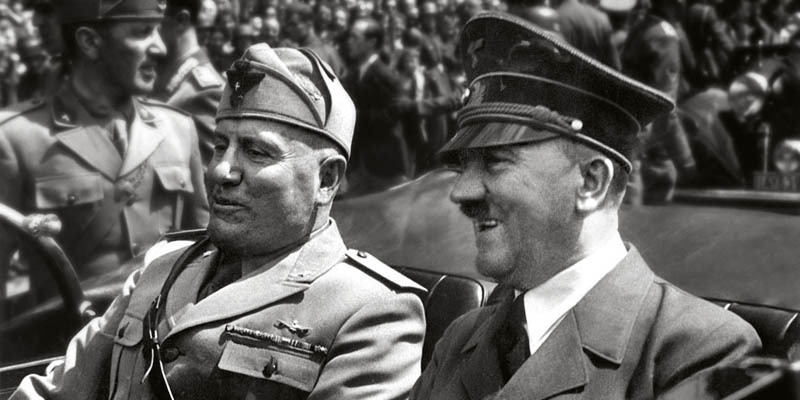
The principal belligerents were European and Asian powers and the United States, divided into two political and ideological blocs:
- The Axis. This coalition was composed of Germany, Italy and Japan. Their allied countries included Hungary and Romania, and were supported by other countries that did not engage in the war directly.
- The Allies. They were led by France, Great Britain, the United States, and the Soviet Union. The countries invaded by the Axis powers aligned with the Allies, including Poland, China, Norway, Denmark, Belgium and Yugoslavia, among others. In addition, they garnered support from countries that were not directly involved in the conflict.
Causes of World War II

Throughout the 1930s, the limitations of the League of Nations and its inability to neutralize international conflicts became apparent.
Since the rise of Hitler, Germany increasingly defied the Treaty of Versailles, bolstering its rearmament policies, reinstating mandatory military service, and militarizing areas designated as demilitarized zones.
In 1935, France and the USSR signed a military pact of mutual defense to prevent the German advance on their borders. In 1936, Italy occupied the capital of Abyssinia (a kingdom bordering its African colonies). In consequence, France and Great Britain sought to impose economic sanctions through the League of Nations.
As a result, Italy and Germany signed the Rome-Berlin Axis agreement, consolidating as allies in Central Europe. Throughout 1938 and 1939, Germany continued its expansionist policy and annexed Austria, the Sudetes, and began its invasion of Czechoslovakia. Meanwhile, in 1939, Italy invaded Albania, which was under Soviet control.
In light of these events, the USSR signed a non-aggression pact with Germany. Among its secret clauses, the agreement established a future partitioning of Poland between the two powers.
On September 1, 1939, assured that the USSR would not intervene, Germany began its military invasion of Poland. In response, France and Great Britain abandoned their passive stance and declared war on Germany.
Fronts of World War II
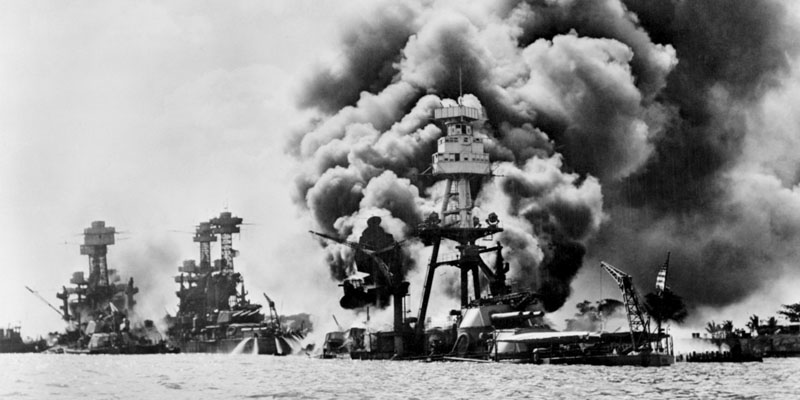
The main war fronts were:
- Western Front. It encompassed territories in Italy, France, the Netherlands, Belgium, Great Britain, and Norway.
- Eastern Front. It stretched across regions of the USSR, Poland, Finland, Estonia, Latvia and Lithuania, and the Balkans.
- Pacific Ocean. This theater spanned island and maritime territories from Japan to Australia and from China to Hawaii.
- North Africa. It covered the area from Tunisia to Egypt and from the Mediterranean Sea to the Sahara Desert.
- Strategic points. Battles were also fought for the control of certain territories in the Indian Ocean, the Arctic, Central Africa, and the Río de la Plata.
Leaders of World War II
The opposing powers were led by:
- Adolf Hitler. The fascist political leader of Germany between 1933 and 1945, he led the military actions that triggered World War II and was the main responsible for the Holocaust.
- Benito Mussolini. The fascist political leader of Italy from 1922 to 1945, he established a totalitarian regime and aligned with Hitler during the war.
- Hirohito. Emperor of Japan from 1926 until his death, in 1989. Despite allying with the defeated powers during the war, he was not tried and retained power. Hirohito is recognized for the profound transformation that turned Japan into a world economic power.
- Winston Churchill. Prime Minister of Great Britain between 1940 and 1945 (and again from 1951 to 1955). Renowned for his leading role in the events of World War II, he is regarded as the architect of the "Grand Alliance" between the US, France, Great Britain, and the USSR.
- Joseph Stalin. Communist dictator of the USSR from 1922 to 1952, he was responsible for turning the USSR into a global political and economic superpower.
- Charles De Gaulle. A key French military leader during World War II, he led the French resistance during German occupation. De Gaulle headed the provisional government between 1944 and 1946 and ensured France was recognized as a victorious power in post-war treaties.
- Franklin Roosevelt. US President from 1933 to 1945, Roosevelt introduced policies that brought the country out of the economic depression. From 1939 onward, he gradually convinced Congress to become involved in the conflict to support liberal democracies.
Phases of World War II
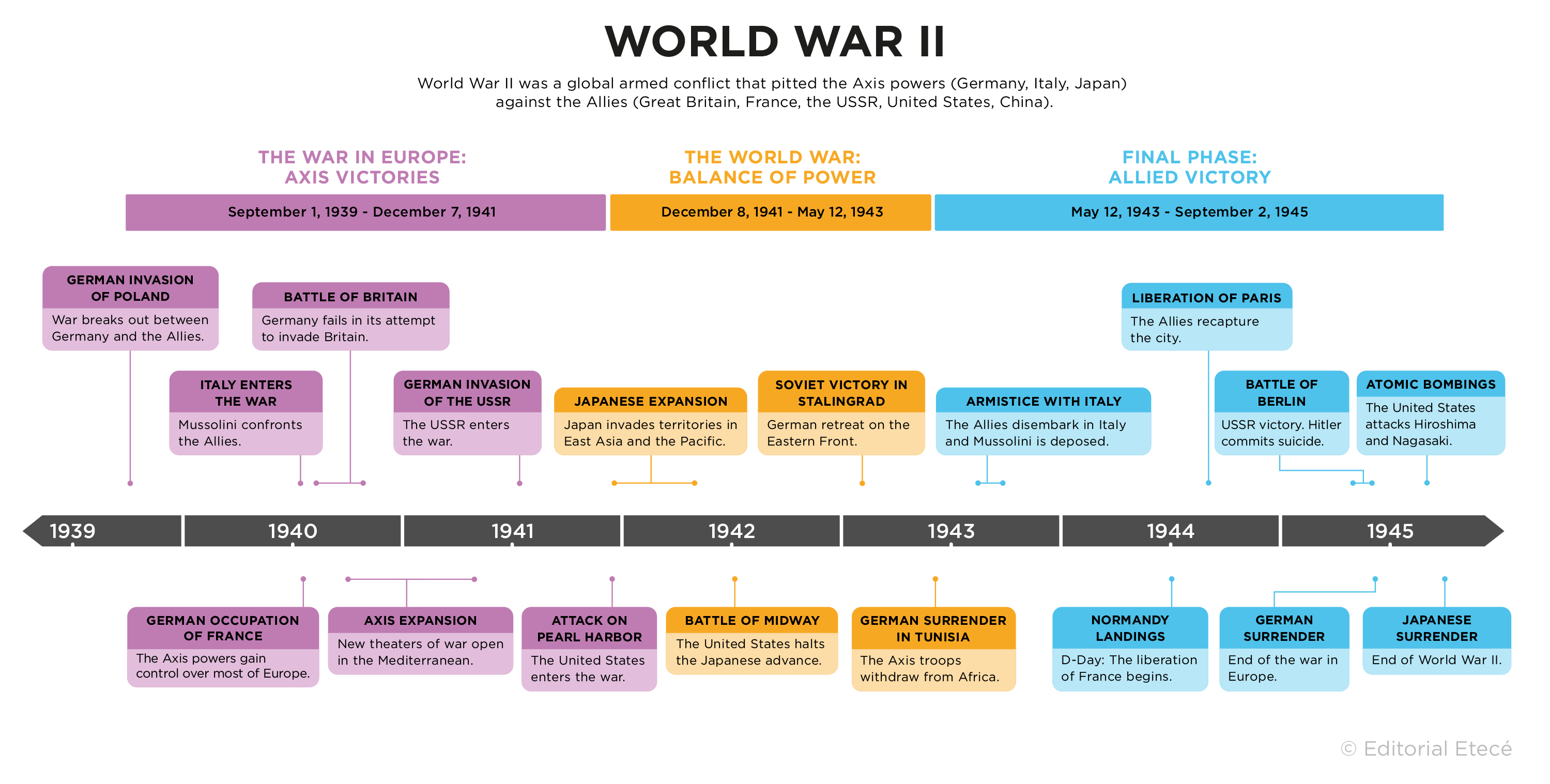
Three phases can be distinguished in World War II:
Axis Victories (1939-1941)
This first phase of the war was marked by successive victories of the Axis forces in Central and Western Europe, with the conquests of Norway, Denmark, France, Belgium, the Netherlands, Yugoslavia and Greece, as well as the expansion of fascist forces in North Africa. In 1941, Germany broke the non-aggression pact and invaded the USSR.
Japan, in turn, invaded China, and in 1941 began its expansion into East Asia: Malaysia, the Philippines, Hong Kong, Thailand, Indochina and several island territories in the Pacific. Following the attack on Hawaii, the United States decided to enter the war.
Balance of power (1942-1943)
Given the expansionist victories of the Axis, the USSR and the United States entered the war. In 1942, on different war fronts, the battles of El Alamein, Midway, and Stalingrad halted the advance of Axis troops. The war thus entered a period characterized by a balance of power. The Americans stopped the Japanese in the Pacific theater.
On the Western Front, the Allies conducted air raids on Germany and invaded Italy from the south. On the Eastern Front, the Soviets succeeded in driving the Germans out of the USSR and invaded Poland. Between 1941 and 1944, resistance was organized in all countries occupied by the Axis powers.
Allied Victory (1944-1945)
On the Western Front, the Allies managed to recapture France and attack Germany from the border. The Italians were defeated, and Mussolini, trying to escape, was arrested by the resistance and was shot. Starting in 1944, the Soviets organized a final offensive against Germany, invading Romania, Hungary, Bulgaria and Yugoslavia. In 1945, they managed to take Berlin.
With defeat looming, Hitler committed suicide and Germany surrendered. In the Pacific theater, after bloody battles, the Japanese were cornered by the Americans.
On August 6 and 9, 1945, the United States dropped two atomic bombs on the cities of Hiroshima and Nagasaki, causing tens of thousands of fatalities among civilians and forcing Japan to sign unconditional surrender.
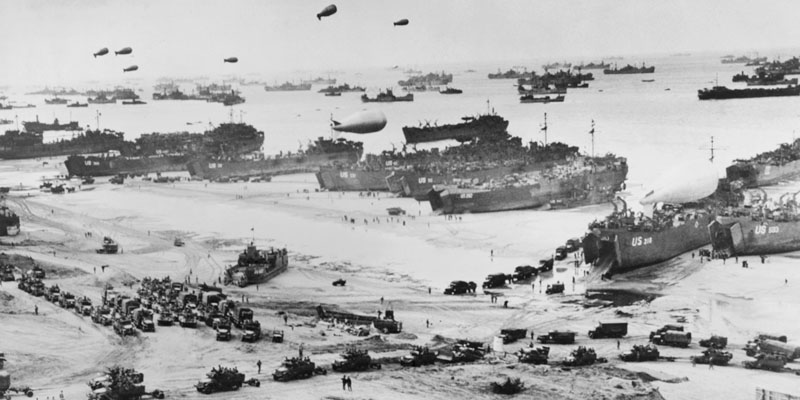
End of World War II
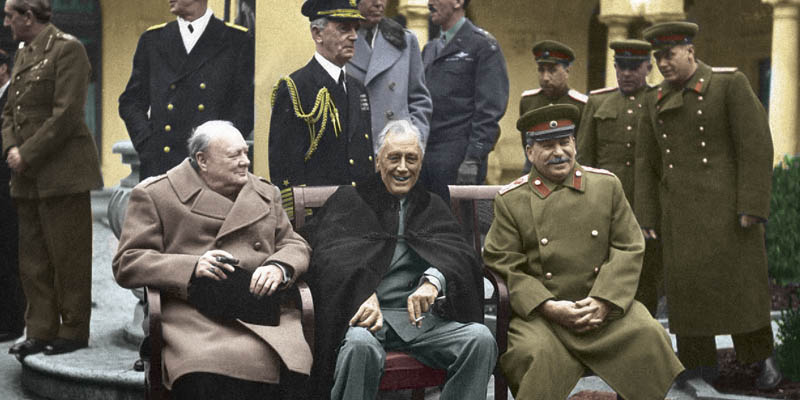
During the final phase of the war, the leaders of the Allied countries held a series of meetings to outline the basis for post-war agreements.
The Yalta Conference, convened in February 1945, was attended by the major Allied leaders: Winston Churchill (Great Britain), Franklin Roosevelt (US) and Joseph Stalin (USSR). They resolved:
- The partitioning of Germany between Great Britain, the United States, France and the USSR.
- The subjugation of Poland and Yugoslavia under the USSR sphere of influence.
- The creation of the United Nations Organization (UN) to replace the League of Nations.
In July, the leaders met again at the Potsdam Conference. This time, the conflicting interests of the Allied countries became evident. The USSR controlled most of Eastern Europe, where it had implemented the communist system. In contrast, the United States and Great Britain defended capitalism in Western Europe and in the territories under their control in Africa and Asia.
In 1946, the Paris Conference was held and peace was signed with Italy, Romania, Bulgaria, Hungary, and Finland. Germany, however, did not sign any peace treaty; instead, it was jointly occupied by the Allied powers.
Consequences of World War II
Among the major consequences of World War II are:
- Demographic disaster. It is estimated that between 40 and 50 million people were killed in the war. This vast mortality was caused by the use of increasingly advanced weaponry, the bombing of cities and countryside, chronic hunger, and mass extermination of civilians (the Jewish Holocaust, the persecution of ethnic minorities, and the use of atomic bombs).
- Mass material destruction. Aerial bombings of cities, industries, and fields were a key weapon in the conflict, leading to unprecedented levels of destruction. The economic impact was immeasurable, and reconstruction took decades. Following the nuclear attacks on Nagasaki and Hiroshima, the Japanese were faced with nuclear radiation contamination.
- Decline of European hegemony. Given the complete human and material devastation of Europe, the United States and the USSR emerged as economic powers which, in turn, began to compete against each other for influence in Europe. After the partition of German territory, Europe itself became divided into two large blocs under the influence of the new superpowers: a Western-capitalist bloc and an Eastern-communist bloc.
- Defense of civil rights. In 1948, following the creation of the United Nations, the Universal Declaration of Human Rights was approved. These agreements between numerous countries sought to uphold democratic values, guarantee individual civil rights, and support the struggle for the rights of social minorities. Furthermore, women's suffrage was established in most countries.
- Decolonization of Asia and Africa. In the three decades following World War II, most colonies gained independence. Local nationalist movements successfully fought the foreign governments of France, Great Britain and Germany, attaining their emancipation.
The Holocaust
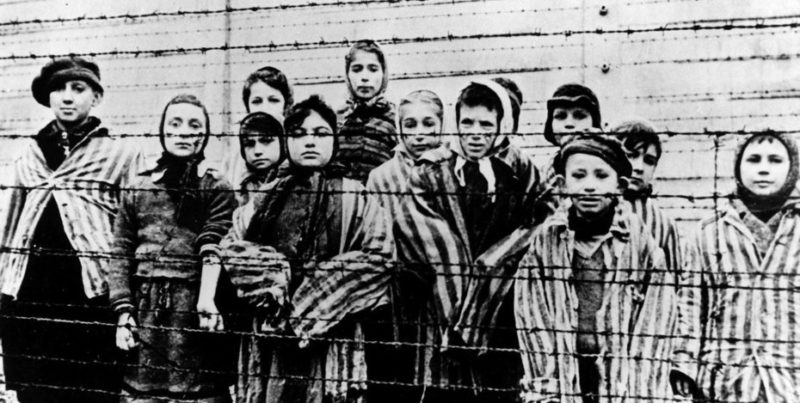
During World War II, the National Socialist party that ruled Germany carried out the systematic and mass extermination of people based on their religion or ethnic origin. This process is known as the "Holocaust" or "Shoah" (in Hebrew).
Since Hitler and his party's rise to power in 1933, measures were initiated to impose Nazi ideology on the general population. Through demonstrations and mass propaganda, the party's values of racism, antisemitism, anti-communism and nationalism were repeatedly asserted. The Nazis held they had to ensure Germany’s "racial purity", and to that end they introduced increasingly more brutal measures against minorities within German society: from sterilizing individuals with certain diseases to the direct persecution of social groups on the basis of their ethnic origin (Gypsies and Slavs), sexuality (homosexuals), or religion (Jews).
In 1935, the Nuremberg Laws were enacted, depriving Jews of their basic rights and forcing them to leave the country or live in segregated areas (known as ghettos). From 1938 onward, with the "Night of Broken Glass'', persecution became more fierce; the businesses and homes of Jewish families were ransacked, and more than 30,000 people were confined to concentration camps.
With the outbreak of World War II, racist policies became more ferocious. Hitler and the Nazi party identified "the Jewish problem" as an urgent issue, and devised a system of mass extermination. In conquered cities, such as Warsaw or Budapest, the Jewish population was locked up in ghettos. New concentration camps were established in which prisoners were forced into labor.
At the 1942 Wannsee Conference, high-ranking Nazi officials proclaimed the "final solution to the Jewish problem": to use the entire Jewish population in order to build supply routes needed for the German invasion of the USSR. Many prisoners died under the harsh conditions.
Survivors were sent to concentration camps where they were eventually exterminated in gas chambers. It is estimated that between 1942 and 1945 over 6 million Jews were murdered.
Explore next:
Was this information useful to you?
Yes NoThank you for visiting us :)